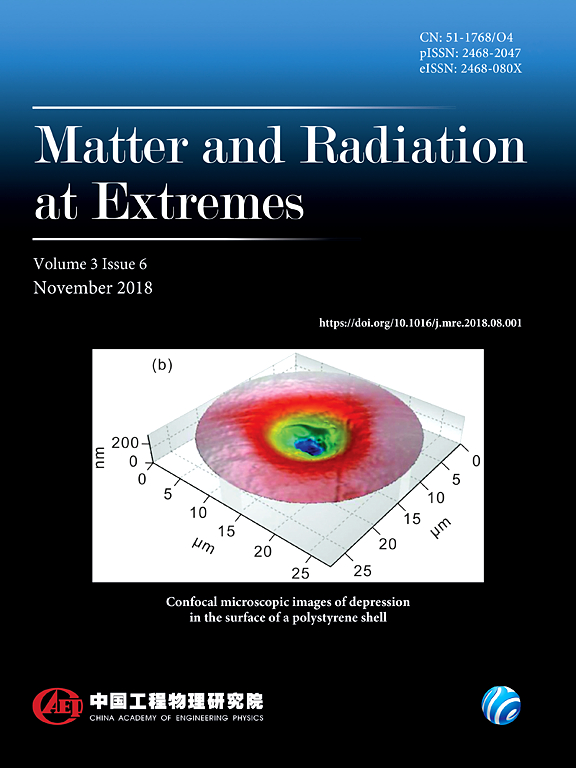Physical insights from imaginary-time density–density correlation functions
IF 4.7
1区 物理与天体物理
Q1 PHYSICS, MULTIDISCIPLINARY
引用次数: 14
Abstract
An accurate theoretical description of the dynamic properties of correlated quantum many-body systems, such as the dynamic structure factor S(q, ω), is important in many fields. Unfortunately, highly accurate quantum Monte Carlo methods are usually restricted to the imaginary time domain, and the analytic continuation of the imaginary-time density–density correlation function F(q, τ) to real frequencies is a notoriously hard problem. Here, it is argued that often no such analytic continuation is required because by definition, F(q, τ) contains the same physical information as does S(q, ω), only represented unfamiliarly. Specifically, it is shown how one can directly extract key information such as the temperature or quasi-particle excitation energies from the τ domain, which is highly relevant for equation-of-state measurements of matter under extreme conditions [T. Dornheim et al., Nat. Commun. 13, 7911 (2022)]. As a practical example, ab initio path-integral Monte Carlo results for the uniform electron gas (UEG) are considered, and it is shown that even nontrivial processes such as the roton feature of the UEG at low density [T. Dornheim et al., Commun. Phys. 5, 304 (2022)] are manifested straightforwardly in F(q, τ). A comprehensive overview is given of various useful properties of F(q, τ) and how it relates to the usual dynamic structure factor. In fact, working directly in the τ domain is advantageous for many reasons and opens up multiple avenues for future applications.从虚时密度-密度相关函数的物理见解
对相关量子多体系统动态特性的精确理论描述,如动态结构因子S(q, ω),在许多领域都很重要。不幸的是,高度精确的量子蒙特卡罗方法通常局限于虚时域,而将虚时间密度-密度相关函数F(q, τ)解析延拓到实频率是一个众所周知的难题。这里,我们认为通常不需要这样的解析延拓,因为根据定义,F(q, τ)包含与S(q, ω)相同的物理信息,只是不熟悉地表示。具体来说,它展示了如何直接从τ域中提取关键信息,如温度或准粒子激发能,这与极端条件下物质的状态方程测量高度相关[T]。Dornheim et al. [j].中国科学:自然科学版,2013(2)。作为一个实际的例子,我们考虑了均匀电子气体(UEG)的从头算路径积分蒙特卡罗结果,结果表明,即使是非平凡的过程,如UEG在低密度[T]下的旋转特征。Dornheim et al., common。Phys. 5,304(2022)]在F(q, τ)中直接表现出来。全面概述了F(q, τ)的各种有用性质以及它与通常的动态结构因子的关系。事实上,直接在τ域中工作是有利的,有很多原因,并为未来的应用开辟了多种途径。
本文章由计算机程序翻译,如有差异,请以英文原文为准。
求助全文
约1分钟内获得全文
求助全文
来源期刊

Matter and Radiation at Extremes
Physics and Astronomy-Atomic and Molecular Physics, and Optics
CiteScore
8.60
自引率
9.80%
发文量
160
审稿时长
15 weeks
期刊介绍:
Matter and Radiation at Extremes (MRE), is committed to the publication of original and impactful research and review papers that address extreme states of matter and radiation, and the associated science and technology that are employed to produce and diagnose these conditions in the laboratory. Drivers, targets and diagnostics are included along with related numerical simulation and computational methods. It aims to provide a peer-reviewed platform for the international physics community and promote worldwide dissemination of the latest and impactful research in related fields.
 求助内容:
求助内容: 应助结果提醒方式:
应助结果提醒方式:


